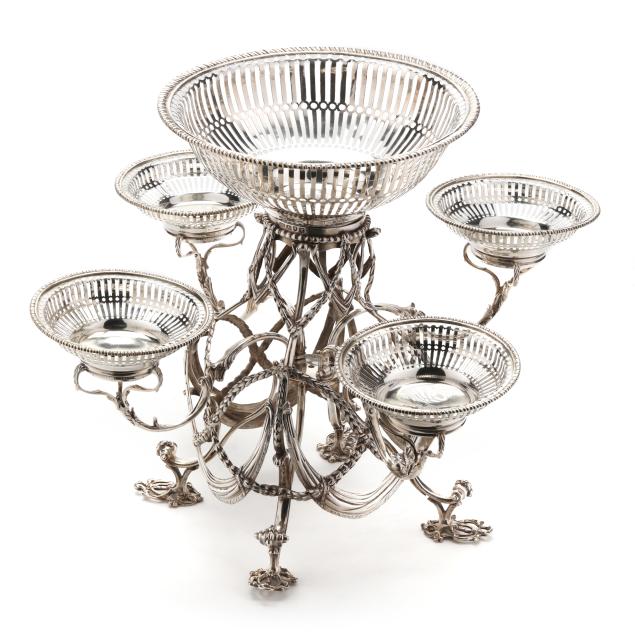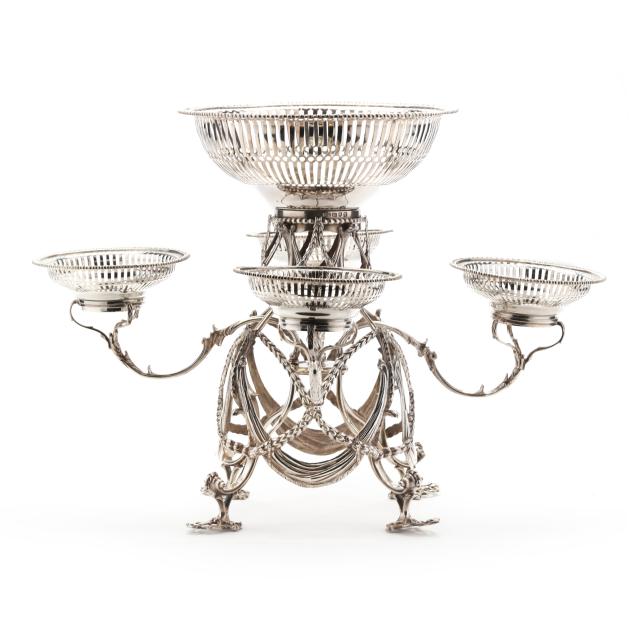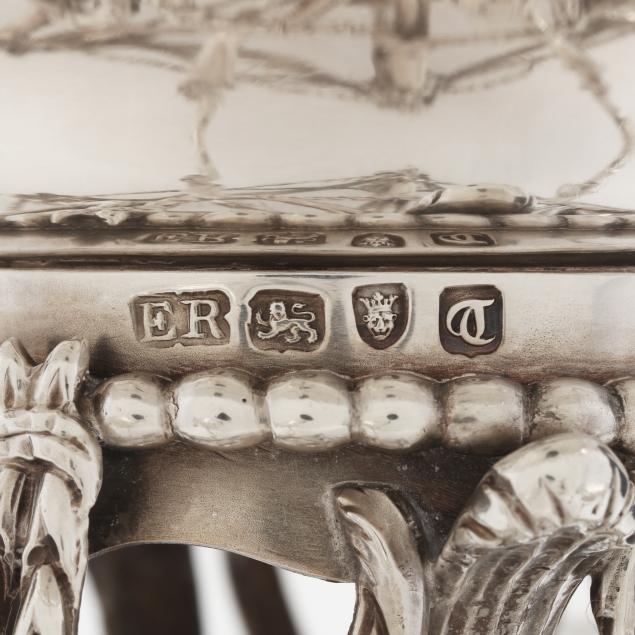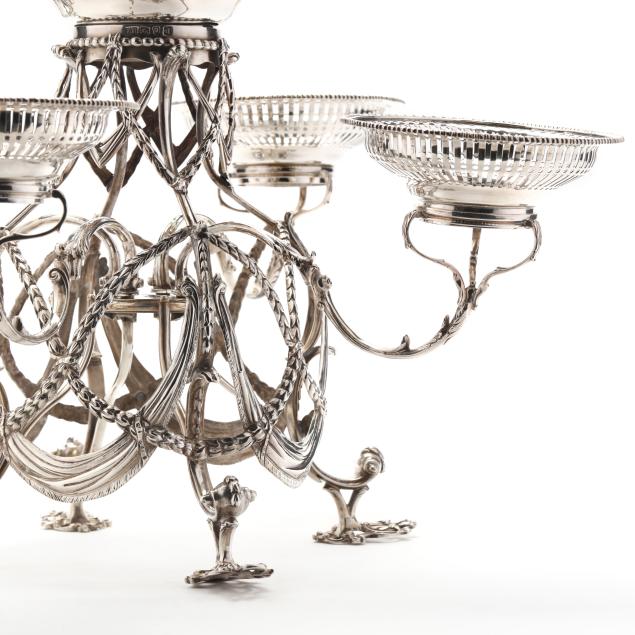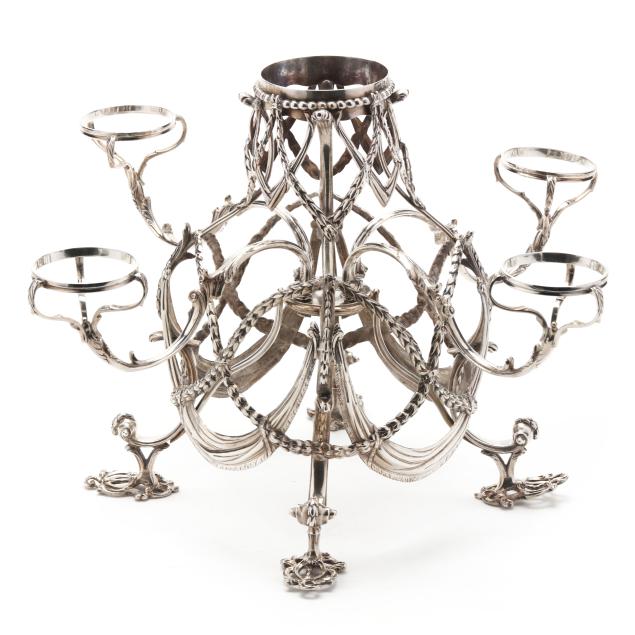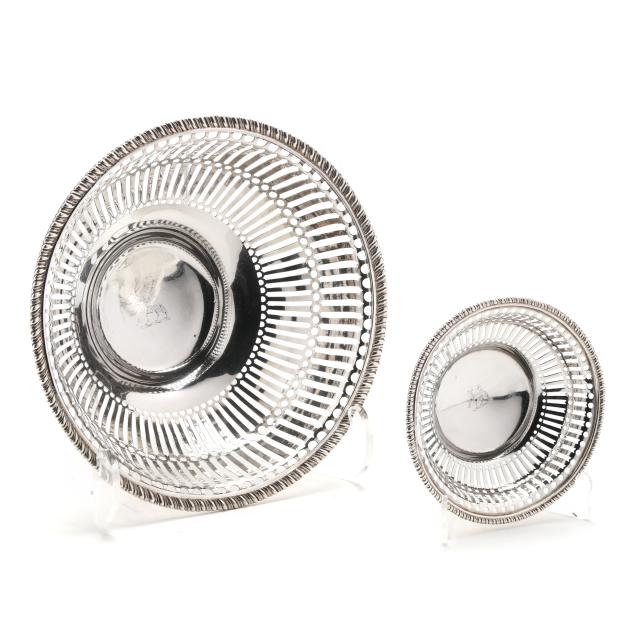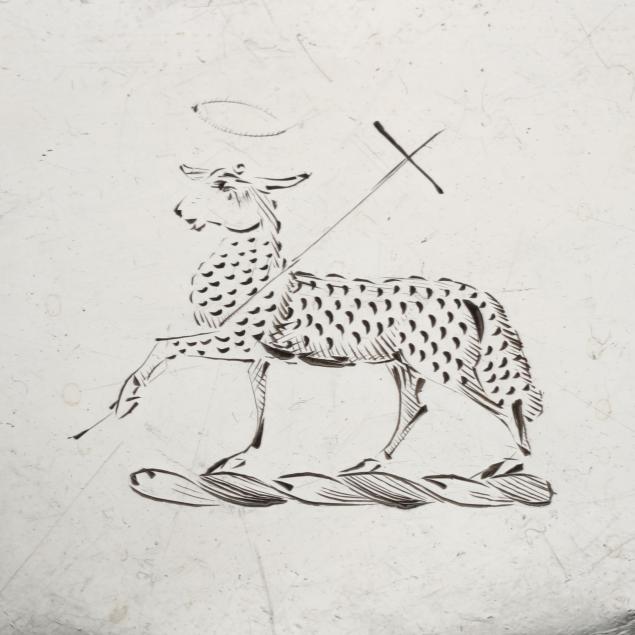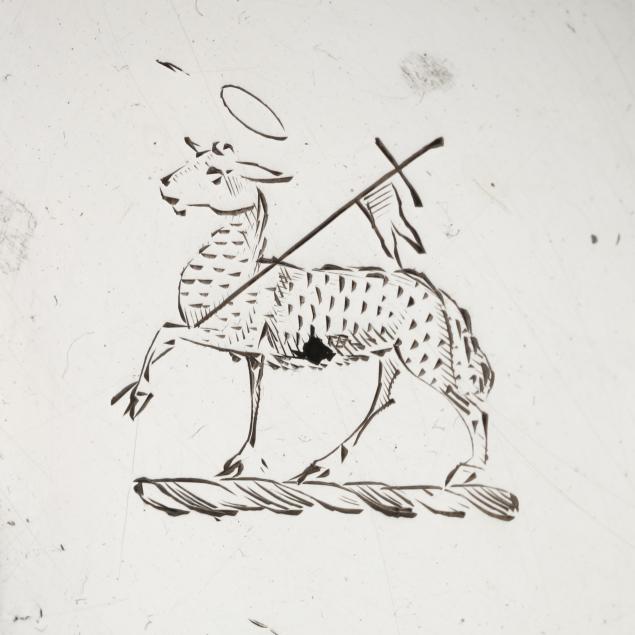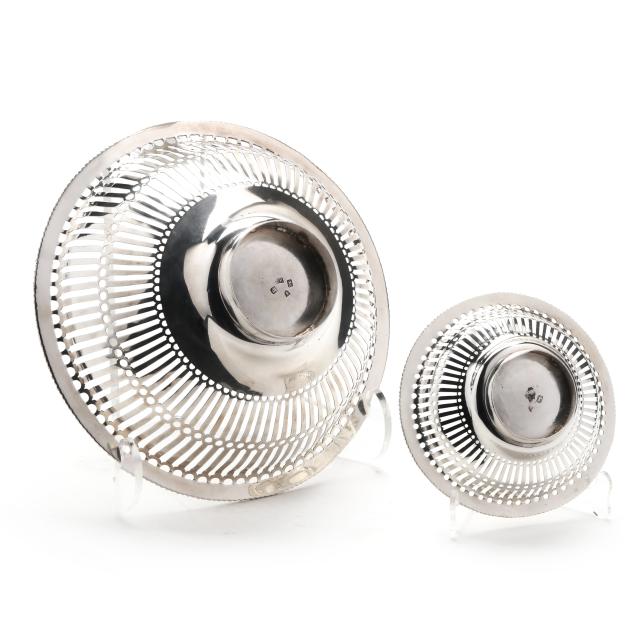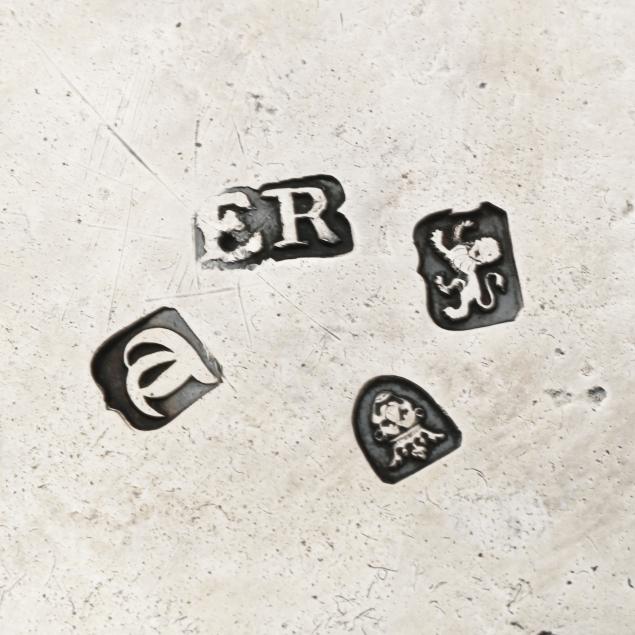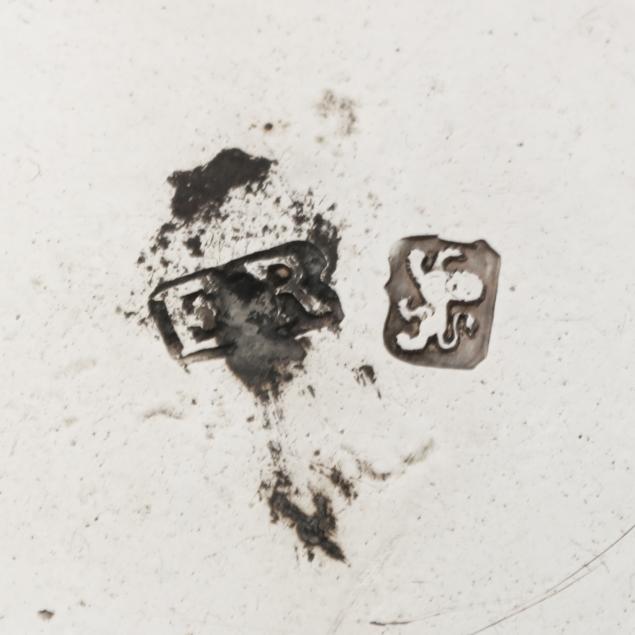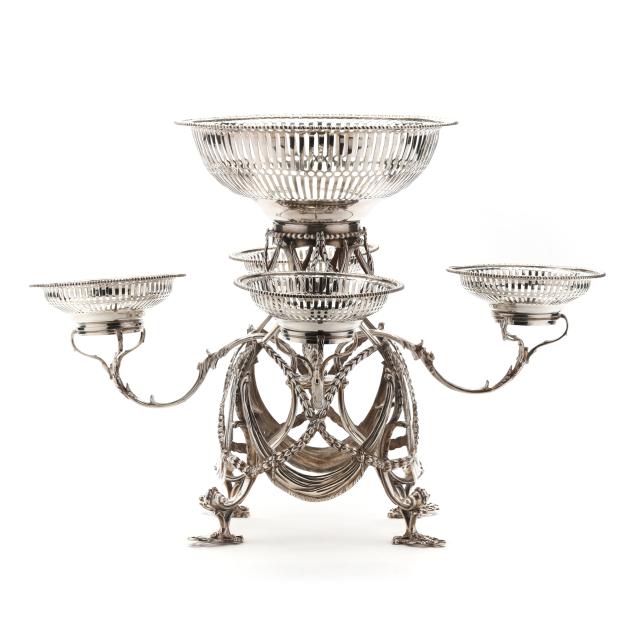
Lot 4061
George III Silver Epergne, Mark of Emick Romer
Explore more items like this one.
Visit our Silver Department Silver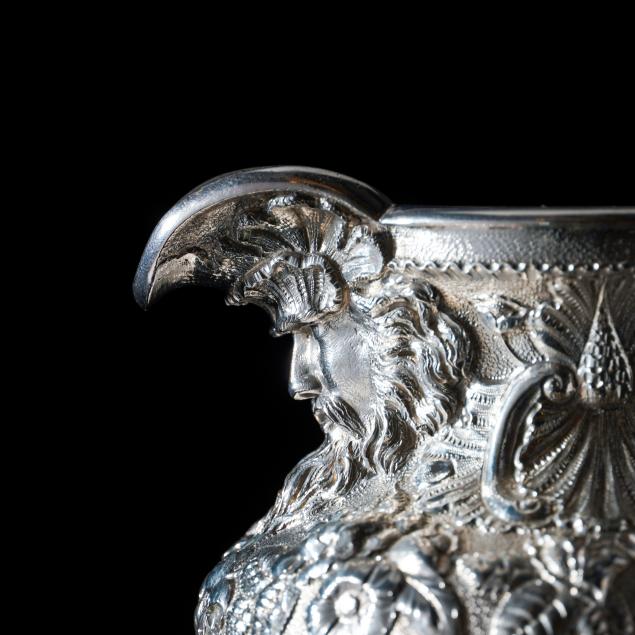
Lot Details & Additional Photographs
12 1/2 x 18 x 18 in.
67.9 total troy oz.
From the Estate of the late Josephine Ehringhaus Ayers, Anniston, Alabama
Emick Romer (ca.1740–1795) was a London silversmith of Danish origin, working in the area from 1763. He was known for his refined Georgian designs, especially his intricate épergnes which showcase his technical and artistic skill. Romer also crafted high-quality tea services, salvers, and tankards for elite clientele. Today, his peices are collected for its craftsmanship and rarity, and can be found in the Fitzwilliam Museum, Colonial Williamsburg; the Metropolitan Museum of Art, the Clark Art Institute; and the Dallas Museum of Art.
Silver epergnes were among the most opulent and visually striking centerpieces in 18th- and 19th-century dining, symbolizing wealth, sophistication, and the artistry of silversmithing. Typically composed of a central bowl or dish supported by an elaborate framework with branching arms, epergnes held smaller dishes, baskets, or glass bowls intended for fruit, sweets, nuts, or flowers. Originating in the Georgian period and reaching their decorative height in the Victorian era, these objects often featured rococo or neoclassical ornamentation—scrolls, acanthus leaves, and repoussé floral designs were common. Crafted from sterling silver or silver plate, epergnes were not merely functional; they were theatrical, transforming the dining table into a stage for display and abundance. Their intricate design and versatility made them enduring symbols of ceremonial dining and refined taste.
Several areas of solder repair, including the branches with resoldering at the ring stands, the feet with minor warping, some denting to the feet of the dishes, would have originally had an urn finial at the center of the stand, very good overall presentation.
